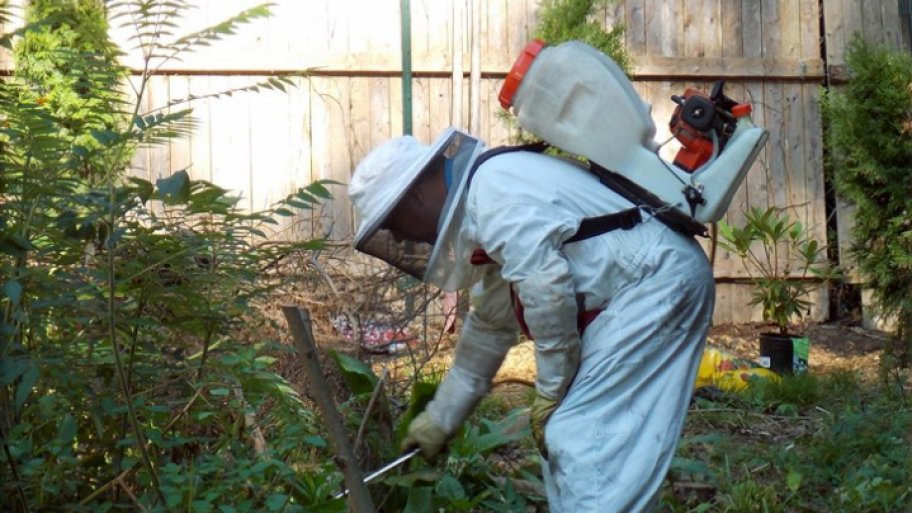Carpenter Bees Found in California
California seems to be the state that has it all – beautiful coastlines, mountains, Hollywood, and…a variety of carpenter bees!
While the most common species of carpenter bee in the United States is the virginica, if you live in California and are trying to identify your carpenter bees, you may be thinking you’ve got the wrong pest. Not one of the species commonly found in California resembles the typical carpenter bee on the other side of the Rocky Mountains.
That’s because California bees belong to two completely different species – the Xylocopa californica and Xylocopa varipuncta, commonly known as the valley carpenter bee.
To make sense of this, we need to understand the basics of taxonomy, something you most likely learned about in high school biology. As a refresher, taxonomy allows us to classify organisms according to their similarities and differences. While all large carpenter bees are grouped into the Xylocopa genus, not all carpenter bees have the same characteristics, so not all are grouped under the same species. Therefore, the virginica has different characteristics than the californica and varipuncta.

Californica Carpenter Bee - Notice the metallic appearance with a bluish-green shine.
Californica Species
Beyond the different species of Xylocopa, there are three different subspecies of the californica carpenter bee:
- californica arizonensis
- californica californica
- californica diamesa

The Californica’s Characteristics
The californica species are more metallic in appearance than the virginica and are typically all black with a bluish-green shine. The males stand out from the females with lighter markings on their back abdomen. You won’t see the yellows of the virginica like the image below, which may be where some of the confusion lies.
The californica species are also located solely in the southwestern United States – Texas, New Mexico, Arizona, Southern California, Nevada, and Utah. These bees typically make their nests in dry softwoods. All three of these Xylocopa californica species are polylectic, meaning they will visit a wide variety of natural flora.
The Varipuncta’s Characteristics
The Xylocopa varipuncta (or the valley carpenter bee) is one of the few species of carpenter bee found in western New Mexico, Arizona, Nevada, Utah, and California. The most striking physical difference of this particular species is the male’s coloration. Male Xylocopa varipuncta are green eyed and have fuzzy, solid golden-brown bodies. Females are the standard metallic black.

A male varipuncta carpenter bee - notice the green eyes, and fuzzy, solid golden-brown bodies. Photo Credit: ©LagunaticPhoto via Canva.com
Another distinguishing trait of the varipuncta is their amazing ability to thermoregulate. This allows them to fly at very high air temperatures without overheating and at low temperatures without freezing. They modify their foraging patterns by flying between different altitudes depending on the temperature. Because of this unique characteristic, they can thrive in a variety of environments.

The valley carpenter bee is known to prefer rotting or decaying wood and structural timbers, which may help you identify them. Here are a few of the trees where you may find them:
- Alder
- Apple
- Apricot
- Balsa
- Chinese paper plant
- Oak
- Organ-pipe cactus
- Eucalyptus
- Walnut
- Pepper tree
If the valley carpenter bee is not harming your property or causing issues around your home, by all means, let them be! They can be very helpful pollinators.
Carpenter Bee Management
Unfortunately, there are times when any type of carpenter bee may make a nest in your home or other wooden structures on your property. Our carpenter bee traps are designed to attract these bees and help prevent costly damage.
The base of the Best Bee Trap is made of wood, specifically soft composite plywood. When carpenter bees are looking to build a home, the softer the wood the better. The holes we’ve drilled into the wooden base are set to a specific diameter to mimic one that a carpenter bee would make. Plus, the angle of the holes cuts off the light source for the bee once it enters the wooden chamber of the trap. To learn more about our trap, visit How Our Carpenter Bee Traps Work.
No matter what color, texture, and species your carpenter bees are, we’ve got you covered with any of our carpenter bee traps. If you're looking for a home for the bees rather than a trap, check out our carpenter bee houses.









2 comments
Customer Support
@Doug Cole – We are happy to hear the traps helped save your wooden structures on the ranch. That should save you a lot of time repairing them! ~Customer Support
Doug Cole
We have the big black variety at our guest ranch on the Klamath River in California (Marble MountIn Ranch)…sorry, don’t know the taxonomy past the “hymenoptera” and “Apidae”. BUT! all of our wooden structures are impacted by them, so my best solution has been to install a myriad of these traps under the eves of our buildings. They are easy to use, and continue the work in the coming seasons with little maintenance from the past year. I like to just leave the dead bees in the traps for a bit, to act as scent attractants. CHEERS!
Leave a comment
All comments are moderated before being published.
This site is protected by hCaptcha and the hCaptcha Privacy Policy and Terms of Service apply.